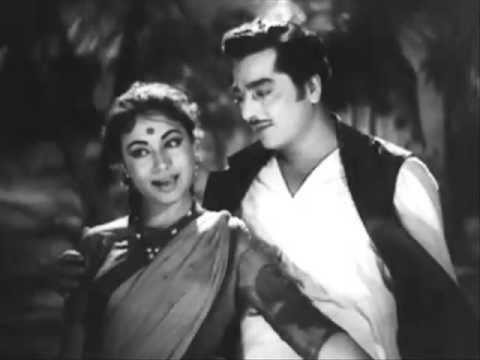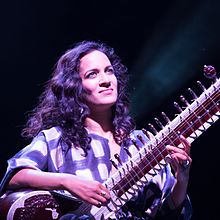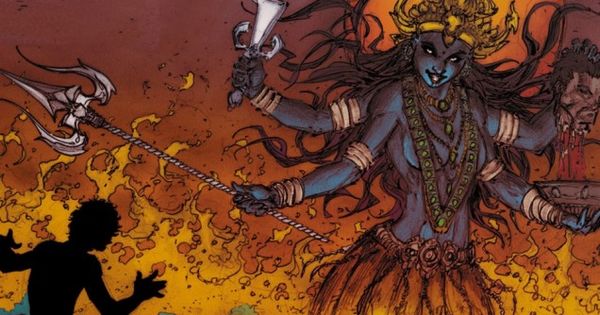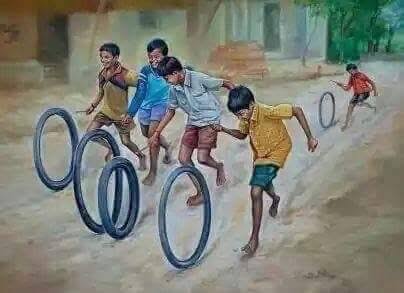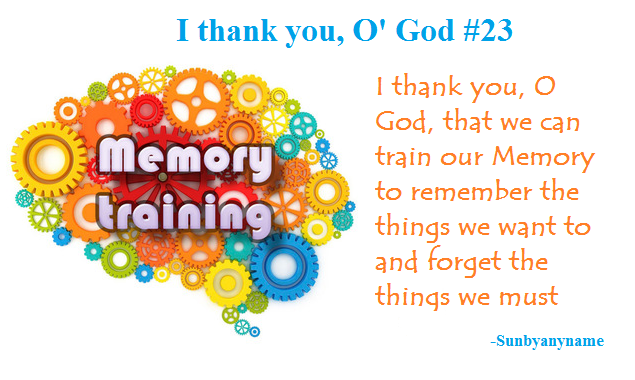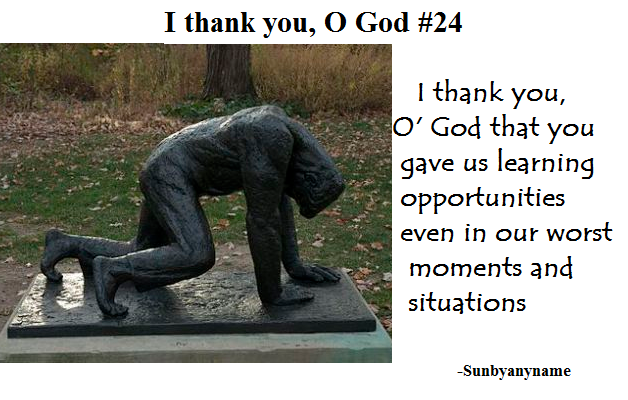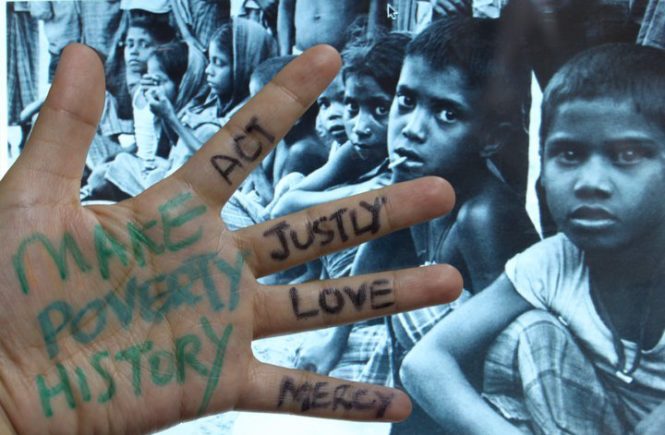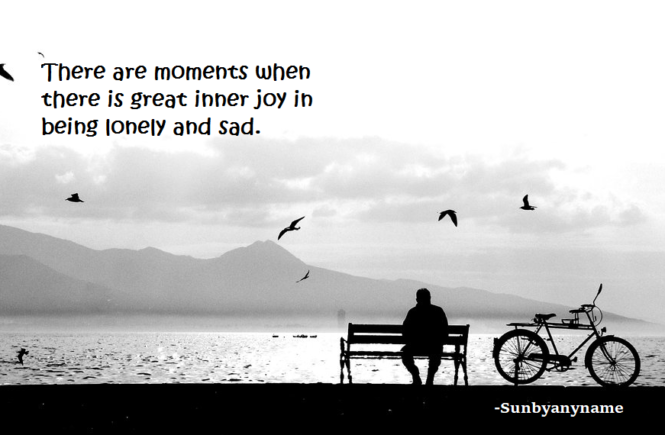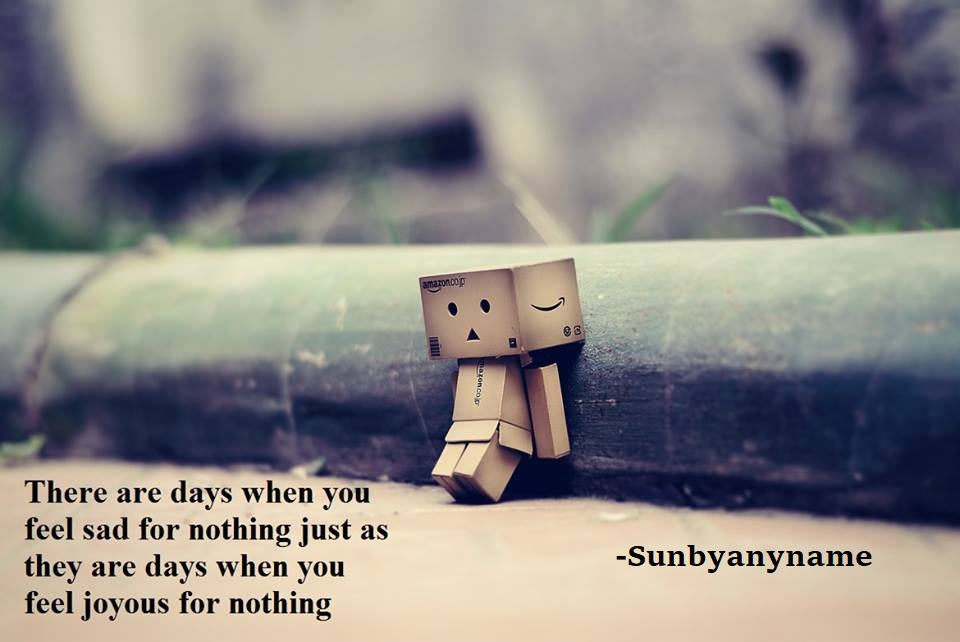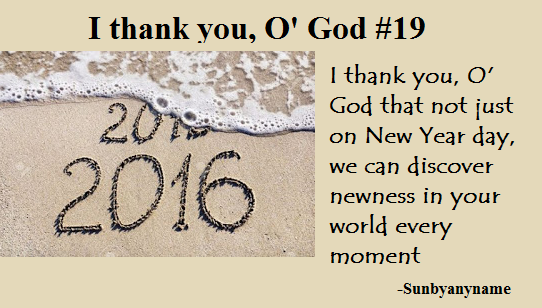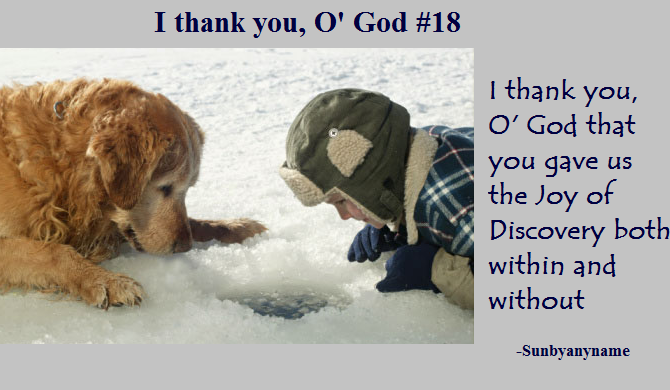Police Inspector Vilas Shinde was very excited; finally, after routine calls of noise-pollution during Navratri and all too familiar cases of eve-teasing, drunken-driving and even unwanted pregnancies, now, there was a real case of murder. At last, he sighed, a real crime to trigger his adrenalin rather than those boring petty offences. So far, anyway he looked at it, it defeated him. First of all, at the behest of victim Mahesh’s family, it was registered as a case of murder under section 302 of the Indian Penal Code even though the police hadn’t been able to find the motive for the murder, let alone find its object: the dead-body. That was on the basis of a suicide-note allegedly penned by Mahesh, which, even Shinde had to admit, had obvious anomalies.
The more Shinde looked at it, the more he was fascinated by it. At a very young age, he had read most of the works of Sherlock Holmes and he had started regarding himself as the person who was the modern-day avatar in India of the 19th century sleuth at 221B, Baker Street, London.
Shinde knew that one day, he would be able to crack the case and make himself eligible for promotion and public adulation.
Veena loved the festival of Navratri, particularly Sharad Navratri, celebrated every year in the months of September/October (Hindu month of Ashvin) to celebrate Goddess Durga’s victory over Mahishasur and of Lord Rama over Ravana. However, in her case as also for her friends in Maharashtra, Navratri goes beyond Durga and Rama and extends to other gods and goddesses such as Lakshmi, Saraswati, Kali, Ganesha, Kartikeya, Shiva and even Krishna. It satiated her religious quest and it was a great social and cultural event that went on for nine evenings and nights. She particularly liked both Garba and Dandiya dances and in her circles, she was known as an accomplished and graceful dancer.
But then, so was Mahesh; not just handsome but also great to watch when he was dancing Garba and Dandiya. Many girls went out of their way to beat their sticks against his whilst going around in swirling dance movements, re-enacting the sword-dance or the mock-fight between Goddess Durga and Mahishasura, the demon king.
Veena and Mahesh had grown up together in their colony in Borivali, a Western Mumbai suburb. Their parents were great friends too. Veena’s parents had produced three daughters, all having names starting with the letter ‘V’; Veena was the eldest, then there was Vibha and the youngest was Vishranti. Mahesh was the only son of his parents. Mahesh’s father Mahendra Nath often teased Veena’s father Vikas that the latter kept producing daughters, in a quest to get a son, and rested (Vishranti means rest or relaxation) only after producing three and still seeing no signs of a son. Both the fathers knew that this was only a joke since, in their families, girls were not considered a curse, unlike in many other parts of the country. Vikas had retorted to Mahendra Nath that the latter’s son was latter’s only for the time being until he married one of the Vs: Veena, Vibha or Vishranti. Everytime they indulged in this light-hearted banter, they cemented not just their relationship of past decades but also of the future.
Veena and Mahesh were nearly of the same age; Mahesh was older by about six months. So, it was considered natural that both should have mutual attraction. He had graduated from the JJ College of Arts and had emerged a painter with enormous promise. Indeed, some of his paintings had been displayed in art galleries including the famous Jehangir Art Gallery at Kala Ghoda in South Mumbai. Veena had just finished her Master of Science from Xavier’s and was undergoing a Diploma Course in Forensic Science. Her mind was, she found out at a very early stage in life, full of inquisitiveness and investigative skills; much more than an average female mind that effortlessly spots the minutest piece of foreign hair on the coat or shirt of her husband.
When she enrolled for the course, Mahesh joked with her that he was already scared of her lest he should leave some tell-tale signs of his aberrations. What aberrations are you thinking of? I would kill you, she had responded equally jokingly.
But jokes apart, Veena had felt that Mahesh wasn’t very serious about their relationship. There was something amiss and she sometimes sighed that it must be lack of commitment. At first she had thought of it as the usual shyness of boys and girls of their age. But, later she felt that perhaps he was undecided and wanted to explore a bit before making a final choice.
She had decided that perhaps it would help him decide faster if she were to afford them a degree of privacy that wasn’t possible at home, what with her other sisters and parents always around. Hence, she had started planning to visit places with him – a little on the secluded side – and perhaps hasten up the process of his committing to her for life. Until then, the only places that they had visited together were the movie halls whereat no meaningful romantic conversations were possible, other than between the hero and heroine on the screen.
One of the places that fascinated her was the Borivali National Park renamed in 1996 as the Sanjay Gandhi National Park, named after the younger son of Indira Gandhi, who died on 23 Jun 1980 in an air-crash in Delhi when he was performing some aerobatic manoeuvres. Wikileaks revealed many decades later that until then three attempts had been made on his life. Nine years later, on 2nd Dec 1989, the elder son Rajiv Gandhi was also killed in a bomb blast in Sriperumbdur. In between, on 31 Oct 1984, Indira Gandhi, their mother and the then Prime Minister of India, was killed in her own residence by one of her security guards. However, Veena noted that Borivali National Park (she still preferred to call it by its earlier name) reflected none of the violence associated with the death of the Gandhi family members. It was serene, verdant and quiet; especially those places that were not usually visited by the frequent visitors and tourists. Those included the two lake areas: Tulsi and Vihar, and the Kanheri Caves, sculpted by Buddhist monks between 9th and 1st century B.C.
Police Inspector Shinde spread the so called suicide note on the table in front of him for the umpteenth time. It was in black ink whereas he had already established that Mahesh normally wrote in blue. It was in the same artistic handwriting that was reflected in Mahesh’s paintings with clear strokes rather than aimless ones. There wasn’t any sign of tremor in the handwriting of a man who was contemplating suicide. The note read:
“What’s the point in going on with this life? Perhaps I should just vanish. No one is happy with me, my parents, friends, not even her. There would be nothing gained in trying to find me. By the time this note is read I would have mingled with the breeze and blown to distant places. Adieu. Forgive me for all the wrongs that I have committed.”
The suicide note was found in a book on his table, so neatly folded that his family said they nearly missed it. They confirmed that it was his handwriting but neither his family nor the woman he was going to marry could confirm any of the thoughts in the note. It came out that there was never an occasion when either of the two families was unhappy with him. It also came out that he was the darling of his large number of friends who swore by him, his vivacity and extrovert nature. Hence, the only thing that jelled in the note was his handwriting and nothing else. Shinde concluded that there was little or no motive for suicide, let alone murder. Another thing, Shinde observed, was that the paper was torn after the word ‘committed’ as if he had actually written more. Now that deepened the mystery; beautiful handwriting without any tremor and hurriedly torn paper just didn’t go together. Shinde Holmes had no choice but to conclude that there was something sinister about the note; it was meant to convey a particular sense but it actually conveyed just the opposite.
Veena remembered the Navratri of the year before. She was, to say the least, very disappointed. Not only that there was no commitment from Mahesh so far, he had started exhibiting signs that she abhorred. For her, Navratri was a deeply religious festival, signifying victory of good over evil. Even the cultural and social aspects for her were secondary. She was aware that many young people were taking recourse to such social evils as drinking and dancing and even indulging in sexual activities during the fest since most of it was celebrated, as the name suggested, at nights; nine nights to be precise. She looked down on these and felt that these were sacrilegious, to say the least. She was alright with dancing and merry-making since victory of good over evil had to be celebrated appropriately. However, she drew the line there and never wanted to go beyond.
So, one night, when she smelled liquor on Mahesh, she felt that he had crossed the line of her trust. When questioned by her, Mahesh had given a long harangue regarding madira being the drink of choice of gods and goddesses and even suggested that she too should partake of it to make gods and goddesses happy.
She, of course, noticed that his mood became far more intimate and romantic when under the influence of liquor. She was looking for some sign of commitment from him and she felt that liquor wasn’t such a bad thing after all since he said and did things that were far more attentive of her than she had hitherto experienced. Later, of course, he earned her ire for having suggested that, like other boys and girls, they could too have a little fun on the side.
That night, nay, the early morning of next day, as she lay in her bed awake, she went over the incidents of night before. Anyway she looked at them, she found that they were not to her liking. Like any other girl of her age, she had wistfully dreamt of sex but, she was firm in her mind that it had to be not casual but with her life-partner. She liked Mahesh, even loved him and she wanted him to be her life-partner. However, with the kind of upbringing that she had, casual sex would reduce her to being merely an object of desire whereas she was to be content with being his wife and lead a happy and secure life.
In the forenoon, they went to Borivali National Park again and sat at their spot near the Tulsi Lake. It was a very secluded spot on the slope of the hill looking down straight into the lake over a cliff. She suggested to him that whilst both of them were separately very talented, they must indulge in some joint creative activities. What did she have in mind, he asked her. She said she had seen an old Hindi movie called Gateway of India (the name fascinated her) wherein the hero and heroine wrote a poem in the wee hours of the morning; he would write a line and she would sing it and then she would write and he would sing it. The song, as she remembered was Do ghadi woh jo paas aa baithe, ham zamaane se door jaa baithe (For those two moments that he/she sat near me, I reached far from the rest of the world). He said whilst he painted imaginatively, poetry wasn’t his cup of tea. Perhaps we could write a play or a story together, she suggested.
So next forenoon, he brought a note-book but forgot a pen. She had taken out her black inked ball-point pen from her purse. She suggested that since he had a beautiful handwriting, he should write whilst they contemplated the story together. They titled the story ‘A Dance Of Death’ that was about a shy boy who was very fond of dancing during Navratri but not just that he was awkward, no one wanted to dance with him. Gradually, as the days passed, their joint story emerged on the paper complete with the state of mind of the hero of the story. He secretly loved a girl who was not just beautiful but accomplished dancer but she scarcely acknowledged his existence, let alone love him back. He was too scared to express his love to her.
He was often subjected to ridicule by almost everyone around him. Whilst she never joined in teasing him, he was quick to notice that she never stopped others.
He had, therefore, decided to commit suicide. On the fifth day, as dictated by Veena, Mahesh wrote on a page of the writing pad: What’s the point in going on with this life? Perhaps I should just vanish. No one is happy with me, my parents, friends, not even her. There would be nothing gained in trying to find me. By the time this note is read I would have mingled with the breeze and blown to distant places. Adieu. Forgive me for all the wrongs that I have committed. Unfortunately (Mahesh wrote further) the note fell from his pocket during a hectic and awkward dancing just before his contemplated suicide. By one of those curious coincidences that one sees so often in Hindi movies, she was the one who picked it up, read it and confronted him. She said she too was attracted to him and was wanting him to make the first move as a man must. Not finding any move from him she had kept distance. She said it didn’t matter if he didn’t know dancing as she would be able to teach him within no time. The story, therefore, was going to have a happy ending, just as both Mahesh and Veena had wanted it.
Having come to the last part of their joint story, Mahesh put his arm around Veena’s waist and with a twinkle in his eye said that night was the last Navratri night and perhaps they could take their joint story-writing from fiction to reality and bring themselves physically together at the back seat of his father’s car that he would borrow for the occasion.
Story? Commitment? Fiction? Reality? She wasn’t sure. She was indeed confused. Next night, he indeed came to the pandal by his dad’s Nano. But, she had left early.
Next day they completed their story ‘A Dance Of Death’ and he gave her the pages to keep to publish whenever she felt like. She never did.
It was finally her evidence that was to be recorded. For the last two days she had gone into near coma. After all, as both families brought out, she was betrothed to be married to Mahesh and she was as much a victim of the incident as he was. She confirmed that it was his handwriting on the suicide note. Anything unusual about the note, Shinde asked. She said, it was most unlike him to write such a note. He never displayed any signs of contemplating suicide; it wasn’t his nature at all, she said. She said they were perfectly happy with each other and she felt devastated by his disappearance. She kept saying that he won’t have ever committed suicide and he would reappear and then the fog would be cleared. She said she herself would commit suicide if indeed it came out that he was dead; she loved him so much. Since his father’s Nano had also vanished with him, she was questioned on that. She said they used to visit cinema theatres and restaurants together and that she was a frequent co-passenger with him in that car. Shinde then questioned her about any other places that they visited together and she confirmed that they were never away from public places. He then questioned her about the black handwriting. She showed him several love-notes that he had written to her in black. He made a mental note of it that perhaps the note, if at all it was a suicide note, was meant to be seen by her more than by anyone else. He questioned and questioned and she kept sobbing and crying and finally he felt nothing was to be gained by questioning her unless fresh evidence surfaced. Shinde even joked with her that since she was learning Forensic Science, perhaps she could give him a clue for cracking the case. She openly cried at his insensitivity and he promised that he would be more careful if there was to be any future questioning of her.
She was doing well in her diploma course in Forensic Science at Xavier’s. They had just learnt about knock-out drugs. These were becoming increasingly more common in – what the instructor told about – Drug Facilitated Sexual Assault, particularly in night parties in Mumbai and its nearby hill resorts. Many of these drugs were used together with alcohol to knock-out a victim for sexual purposes. She learnt that a drug called Gamma-Hydroxybutyric Acid or GHB for short was often referred to, in forensic circles, as Date-Rape Drug. The only problem, she learnt, was that once administered, it rapidly eliminated both in urine and blood and the next morning, even after tests, one could never say with certainty whether the victim was indeed administered it. She was horrified when the instructor told that although such drugs were strictly prescription drugs, there were many illegal ways of purchasing it. A notorious case of use of this drug in a party at Lonavla was discussed in the newspapers for a few days. She and the class, of course, learnt the professional ramifications of such benzodiazepines.
In yet another class, she learnt about how long does it take for a body to float after drowning. She learnt that the time for body to resurface was a function of the temperature of the water as well as body fat. She learnt that in warm water the body rises rapidly because the formation of gas within the body would be fast. How rapidly, she enquired from the instructor. He said it would be within a day or two. However, in cold water the bacterial action would e rather slow and sometimes it would be weeks before a body would surface. As an example, the instructor brought out that in Mumbai Harbour, occasionally bodies of construction workers were discovered on surface many days after they fell into the sea from construction sites adjoining the harbour. These were in such decomposed state after having been in water for several days that nothing worthwhile could be learnt from them. She also learnt that when a body is fully distended, it couldn’t easily be sunk even with counter-weights. However, counter-weights would keep a body down if already sunk.
Shinde remained awake in bed; the more he looked at the case, the more it seemed to defeat him and yet, he knew there would be that one clue that everyone would miss except Sherlock Holmes and that clue, if correctly pursued, would help solve the case. In this case, the clue would be that one can’t vanish in Mumbai or even out of it in a car without being detected at one of the cameras of a toll plaza. He had made extensive queries at all toll-plazas in the city and the suburbs and this particular Nano with its registration number hadn’t been sighted anywhere. Hence, if it were to be within the city, it could be either in the garage of someone’s house or abandoned in a remote place or perhaps in a watery grave. He made queries at Sanjay Gandhi National Park and found that the vehicle passes there didn’t capture the licence plate number and hence counterfoils of vehicle passes merely mentioned the licence plate number as verbally told by the driver. In any case, there wasn’t a single record of this particular Nano having entered or exited the park.
It was the happiest day of Veena’s life. On the auspicious day of Ganesh Chaturthi, both Mahesh and her parents had decided to hold an engagement ceremony for them, after consulting them. Lord Ganesha was associated with Shubh Ganesh (Good Beginning) and hence a betrothal on the day of Ganesh Chaturthi was to spell the beginning of a lifetime of happiness for the couple. After the ceremony, when he was leaving, Mahesh whispered to her that in the coming Navratri, any of her objections against not giving in to him won’t be valid. All that she did was to blush.
On the first day of Navratri, she joined her sisters and parents for Kali Pujan at home after the ghatasthapana. Now that she was betrothed, she was cautious not to over indulge in eating all the goodies that were prepared at home staring with Ganesh festivities and ending with the ninth night of Navratri. The last thing that she wanted to do was to put on weight and not look as comely as she normally did, during her forthcoming wedding.
During the dandiya, as she beat her sticks against Mahesh’s, he whispered to her, “Tell me when should I get the Nano?”
Veena realised that it was becoming increasingly difficult to keep him at bay. On the fifth night, the last day of Laxmi Pujan, she finally gave in. Close to midnight, when the dancing and music was still at crescendo, they simply vanished from the hall. He had already parked the Nano at a secluded place in the parking.
It wasn’t anything that she had wistfully prepared herself for. First of all, the smell of liquor on his breath was so detestable. At least on their first night together he could have avoided liquor. And then, the Nano didn’t have enough manoeuvering space. And finally, he didn’t appear to be mindful of her desires and was focussed only on giving himself maximu m pleasure.
It wasn’t any better in the next two nights of Saraswati Pujan. And finally, the Eighth day of Navratri was there.
No untoward incident of any nature had been reported around any of the water bodies of Mumbai including the Sanjay Gandhi National Park, Borivali. To start with, that year, the rains had continued well up to the first week of October and the tell-tale signs, if any, had been obliterated with the rain and rapidly growing grass and shrubbery. Shinde realised that the British were of set habits and it would have been easier for Sherlock Holmes to find some clues or signs that were against the grain of the British. However, in India and particularly in Mumbai, chaos was indeed the order of the day. No forensic science skills really worked. Nothing.
The eighth day of Navratri was devoted to Goddess Durga when a Yajna or Hom is performed in her honour. Everyone has his or her favourites; Veena’s favourite was Durga, the Shakti, or Devi, the incarnation of Goddess Parvati. Whilst many people bemoaned the condition of women in modern India, Veena thought with justifiable pride that just a look at Hindu ancient scriptures would show the concept of Shaktism wherein metaphysical reality of human being is not masculine but feminine. Devi (Goddess), according to these texts, is not just Supreme but also Creator of Universe. She is the one combating evils and demonic forces that threaten peace, prosperity and dharma.
Veena had given herself freely to Mahesh because she was betrothed to him now and would be married in near future. More than the sexual pleasure, it was an act of love for her would be husband, her master, her life. There were small irritants like his habit of drinking even during a religious festival. However, she had faith in her love that it would overcome all these irritants. After all, in many different ways he was ideal for her. They had grown up together and as expected he had shown inclination to be with her rather than with Vibha or Vishranti. She wasn’t just content with life; she was ecstatic at the turn of the events.
That night, there was a much bigger crowd at the dance-hall than on other days. It usually happens on the eighth and ninth nights, being holidays. She and Vibha had gone for the Dandiya since Vishranti wasn’t feeling well and hence stayed at home. They had taken an auto-rickshaw to the hall since Veena had spurned Mahesh’s offer of going by Nano. She had told him there was no way that she could think of anything or anyone other than Goddess Durga on those two days. He had said that he was disappointed because he had started enjoying the act with his future wife. Repeating a Hindi films dialogue, she had told him to wait since she was going to be completely his for life.
As they went through the swirling motions of Dandiya, Veena noticed that Mahesh had a far-off and disenchanted look. What was more, he was displaying more than usual interest in Vibha. Being a family friend, there was nothing unusual about a sense of intimacy that Mahesh enjoyed with Vibha or for that matter with Vishranti. However, she was feeling jealous of the kind of attention that he was giving Vibha. At one point in the night, she saw them in a conspiratorial conversation too. And it shocked her to see Vibha drinking from his hip-flask. She prayed that it would be just orange squash.
At about midnight, when she was dancing with her female friends, she suddenly noticed that Mahesh was missing from the hall. She looked for him here and there and couldn’t find him. Alarmed, she also noticed that Vibha too was missing. It was time for them to get back home and she knew that auto-rickshaws were difficult to find at that hour. She went outside to the parking lot to find an auto rickshaw before calling Vibha on her cellphone.
As she hailed an auto-rickshaw, to her shocked surprise she found Mahesh’s Nano parked at the same spot whereat, for the last three days, they had made love. She had turned down his offer of bringing the car even that night and hence wasn’t expecting it there at all. As she tiptoed to the rear of the car, there was discernible movement inside at the back seat and at one time, she caught a glimpse of his face with ruffled hair. There was hardly any doubt that he was there with someone; no one goes to the rear-seat of his car just to doze off in the midst of a dance.
By that time the auto-rickshaw that she had hailed had approached and now she must call Vibha to return home with her. She did and this she wasn’t prepared for: the answering tone came from inside of Mahesh’s Nano. Her face became white. She boarded the auto-rickshaw and was in a dazed state in the ten minutes ride home.
After about half an hour Vibha returned too. She knew that he had dropped her by his father’s Nano. Nothing was spoken between them as they went to sleep. The fact was that both remained awake for different reasons.
Shinde gathered all his facts. It wasn’t a suicide as given in his note. A man hell-bent on suicide, doesn’t cover his tracks to the extent that neither the vehicle he is supposedly traveling in nor his body is traceable even a week after the crime. No one associated with him, his family and friends, had reported anything unusual. If it was a murder it was a perfect murder since the victim had just vanished without a trace. His fiancee’ was devastated and so were both the families. There were no suspicions, no accusations. How was he, Shinde, supposed to solve the case? Sherlock Holmes was fictional and could plant clues in the story. In reality, in this particular case, there were no leads, no clues.
When Mahesh had vanished, as established by Shinde, Mahesh, Veena and Vibha had gone together to see a movie at a cinema hall close to their house. He had taken the two sisters by his Nano. Halfway along, he had simply disappeared. When he didn’t return at the end of the movie, the two sisters had taken an auto-rickshaw back home. The parents had confirmed the fact of two sisters being picked up by Mahesh for the movie and returning alone by auto-rickshaw. Mahesh hadn’t told the sisters where he was going and hence they had as little clue about it as Shinde had about the entire case.
Veena remained awake throughout the night. Her first reaction was self-pity. Here she was, recently betrothed and about to marry her dream-boy and then this happened. It shattered her life totally. When she and Mahesh had exchanged rings, just a few days back, she had felt that he had seen their future together and all that she had to do later was to tame some of his feral tendencies. Liquor wasn’t such a great challenge. However, a man, who, after committing to her, still looked for other avenues, had not been worthy of her trust.
In the wee hours of the next morning, she had turned to Goddess Durga to show her the way. The word ‘Shakti‘ came returning to her over and over again. The kind of love that Veena had in mind was similar to that of Goddess Parvati (Durga’s avatar), after immolation as Sati, returning to Lord Shiva. She felt that wedding was a sacred bond that lasted for many lives. And here Mahesh was, not just being licentious, but being so with her own younger sister; the one who was to look up to him as a brother. She watered down Vibha’s own role in the debauchery by taking into consideration his relentlessly goading her, as also under the influence of liquor. She would have trusted him as a devar (brother-in-law) or brother.
By the time, others woke up, her mind was made up. She said a silent prayer to Durga to give her Shakti, strength.
In the forenoon, she went to his house and as was usual for her, tidied up his room whilst he had a bath. Some of the books had started gathering dust and she not only dusted them but also rearranged them.
He suggested that they go out to see a movie. She consented and said they could take Vibha too with them. The parents approved of it since Visharanti in her condition couldn’t have accompanied.
He sat between the two sisters. The movie turned out to be boring. About half an hour after the movie started, he whispered to Veena, “Shall we make use of the car?” She was already prepared for it. She said yes, indeed, that’s what she had been thinking of. So they sneaked out. Being a boring movie, many people were going out and coming in. Half an hour later, they were at their favourite spot near the lake.
He parked on the slope facing the lake, in a clearing in the woods. He took out a flask of liquor and two glasses and said now that they had already gone ahead and consummated their love, perhaps she could join him in having a drink. She said she wasn’t comfortable with the idea but if it made him happy, she would do it. After he poured out liquor in two glasses and handed over both to her, he got out to answer nature’s call behind the bushes and she was able to mix adequate quantity of GHB in his drink.
“Cheers”, he said, “To a lifetime of love and commitment”. She raised her glass and said, “May we be happy and content with what we are going to do.”
It didn’t take him much time to be knocked out on the driver’s seat. She lowered the window panes a little bit so that the water would enter the car when driven into the lake. It started raining. She prayed that it would be unnoticed both in sound and sight when the car was driven into the lake. In any case, there was no one around.
She put the car in neutral whilst it was still on hand-break, came from outside near the driver’s window, opened the door, released the hand-brake, locked the door from inside and banged the door shut. She went behind the car to give a push. It slowly started going downhill. Since she had taken out the ignition key, the tyres got locked straight and soon the car picked up speed and went over the cliff into the lake. It wasn’t long before the car sank.
She walked back to where she could get an auto-rickshaw. Some ninety minutes after she had left Vibha, she was back with her in the cinema hall.
Whispered Vibha to her, “Deedi, last night when you phoned me up…….”
“…..we were both at home, Vibha…..we didn’t know about the other, we should have known……Durga shows the way….”

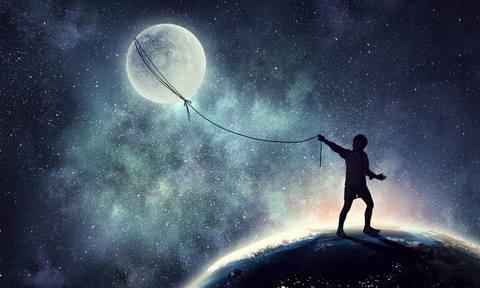

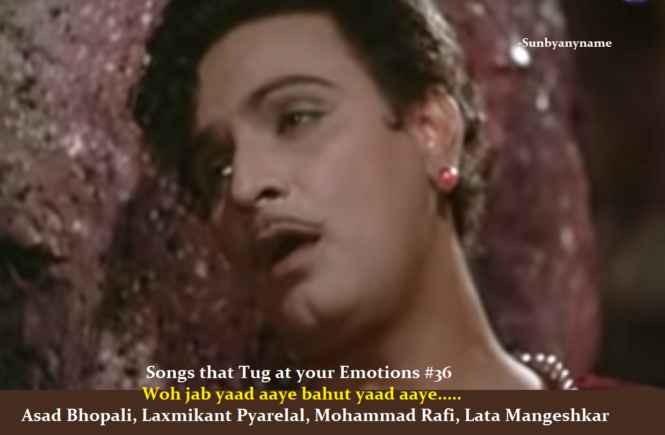
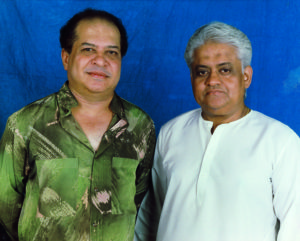 Before we take up anything else about the movie, we should take up the music duo of
Before we take up anything else about the movie, we should take up the music duo of 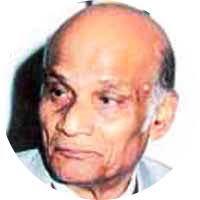 Asad Bhopali,
Asad Bhopali,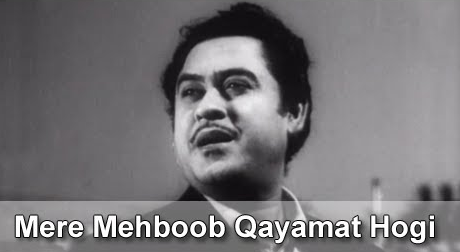
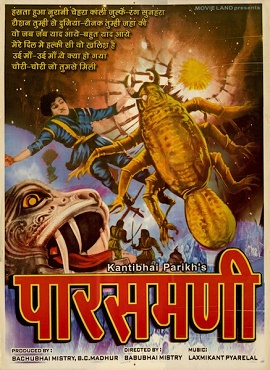
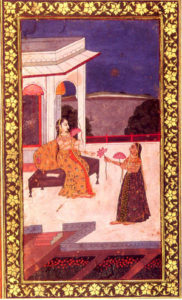 Raag Kalyan is the basic raag of Kalyan thaat, which is also known as Raag Yaman (from the Mughal period onwards).
Raag Kalyan is the basic raag of Kalyan thaat, which is also known as Raag Yaman (from the Mughal period onwards).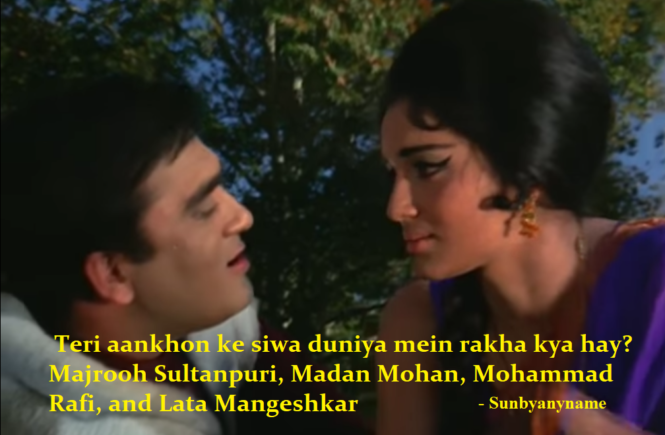
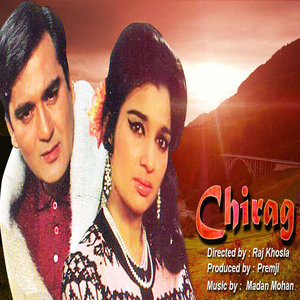
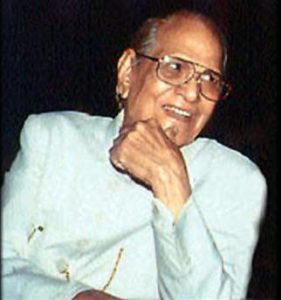 Majrooh Sultanpuri
Majrooh Sultanpuri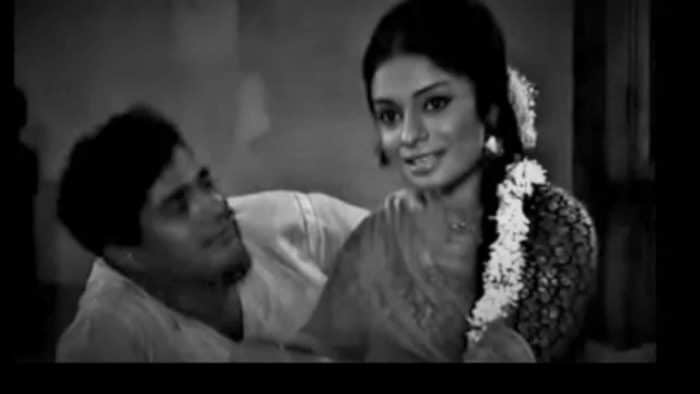
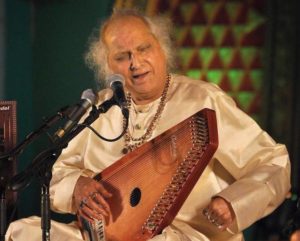
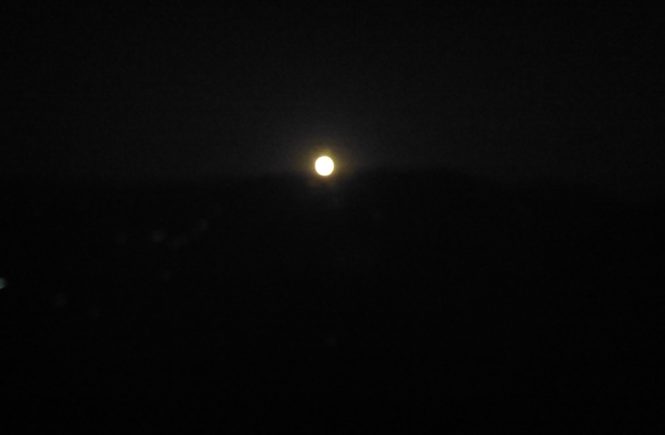
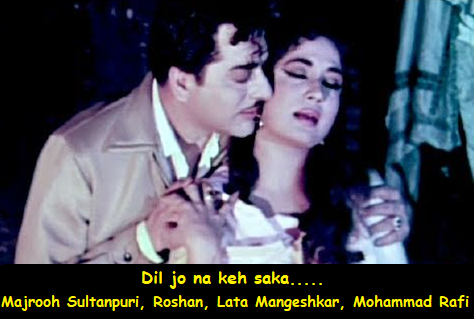
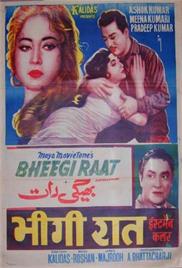
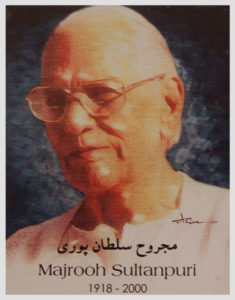 Majrooh Sultanpuri
Majrooh Sultanpuri